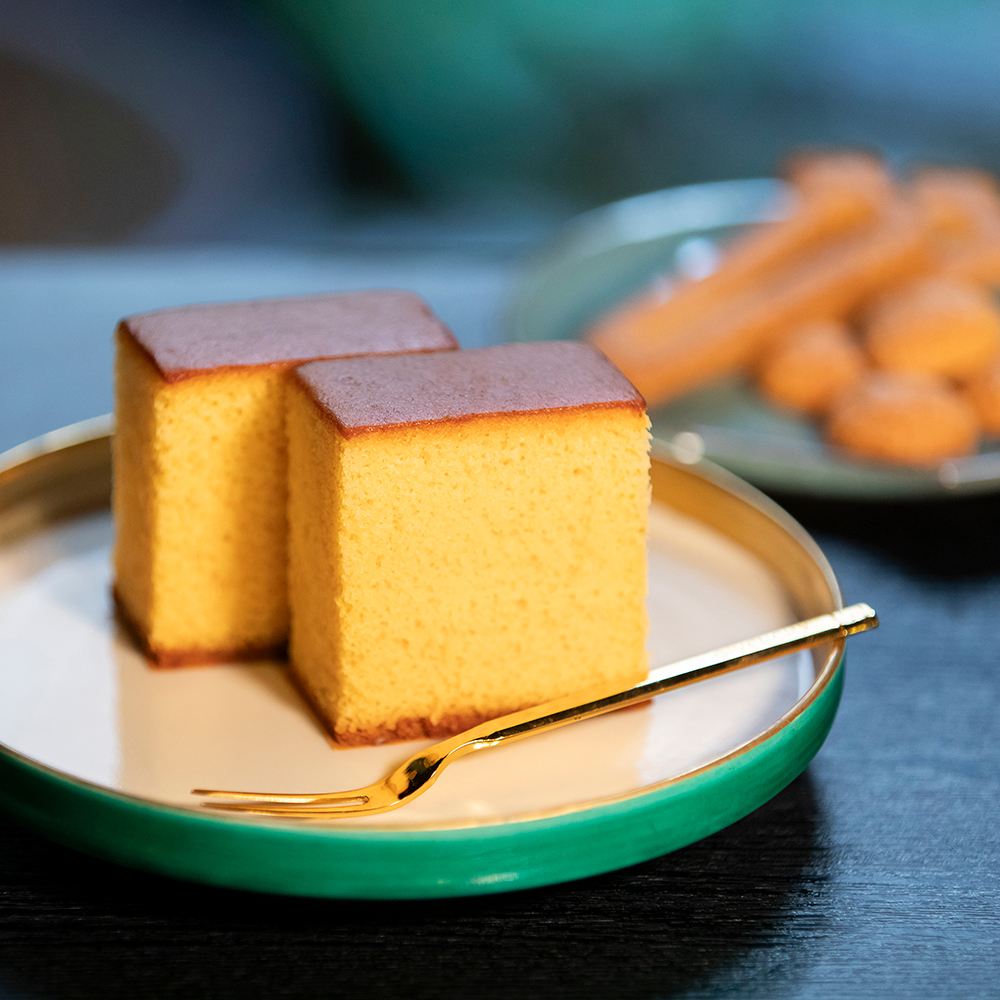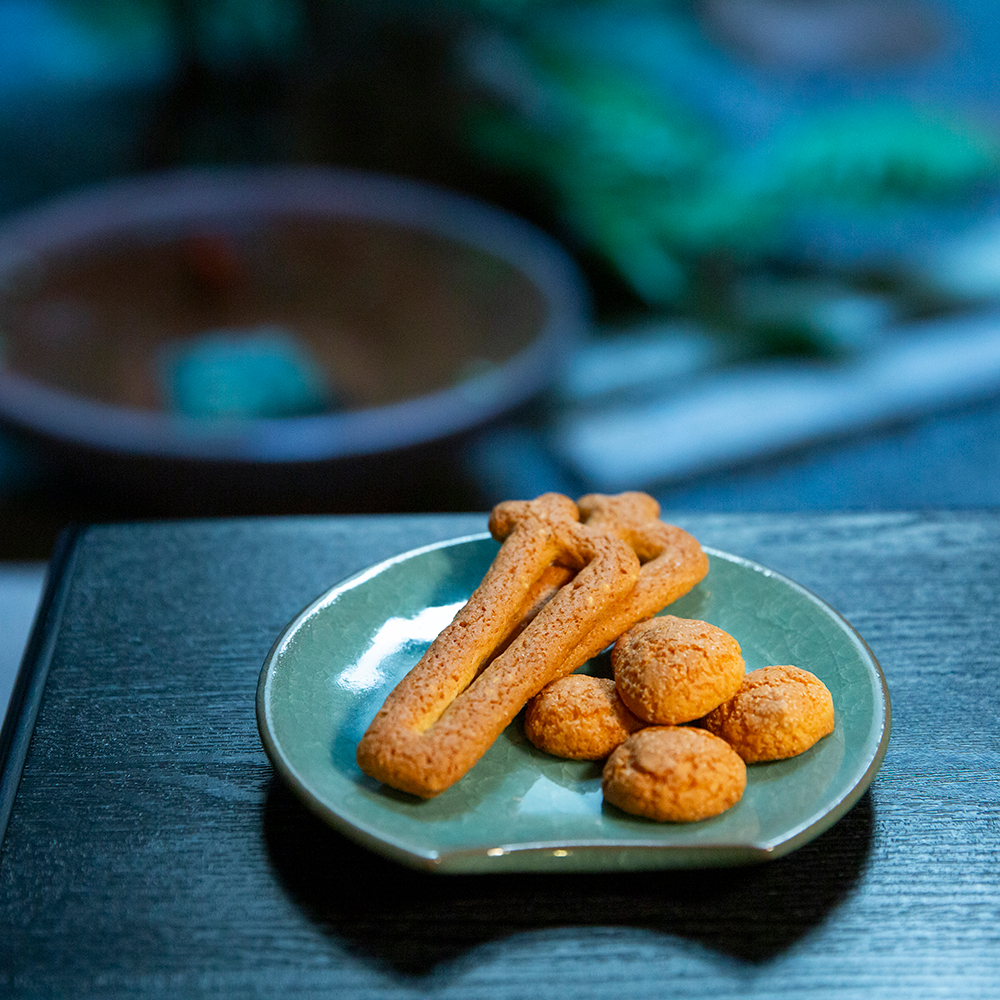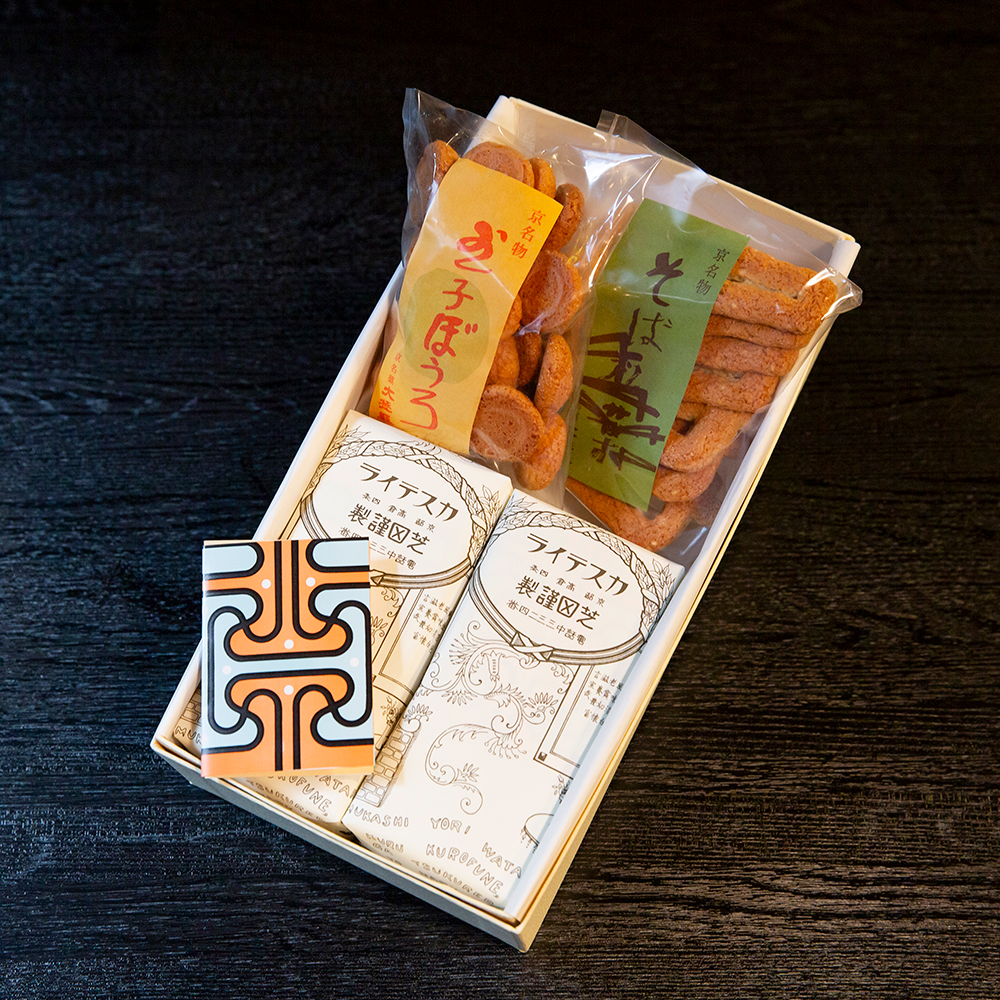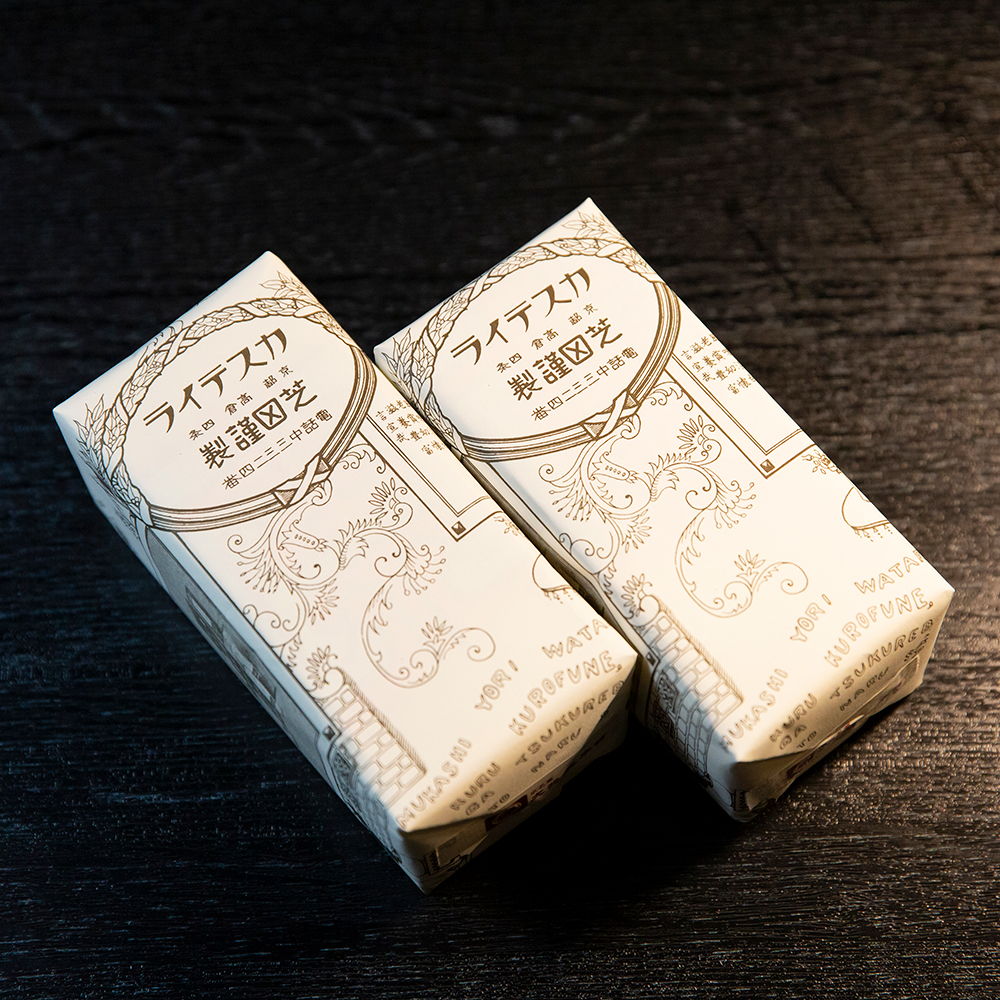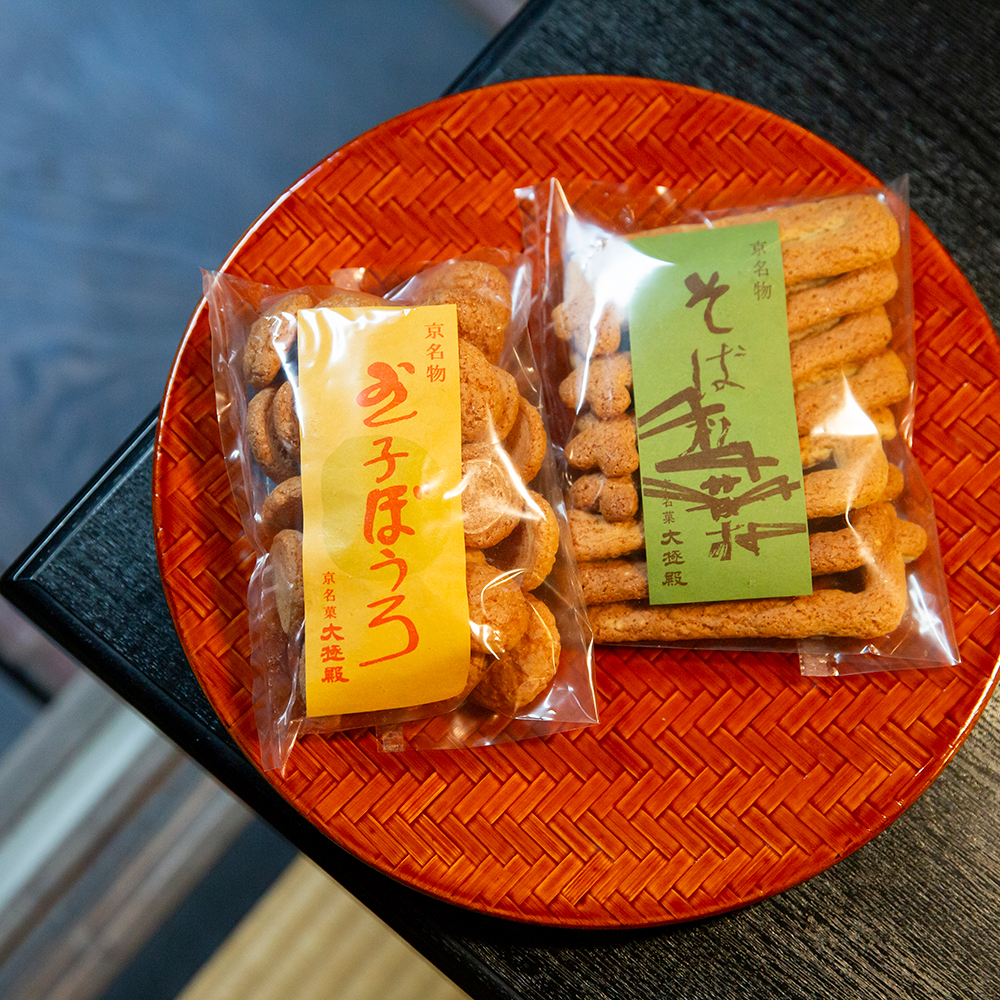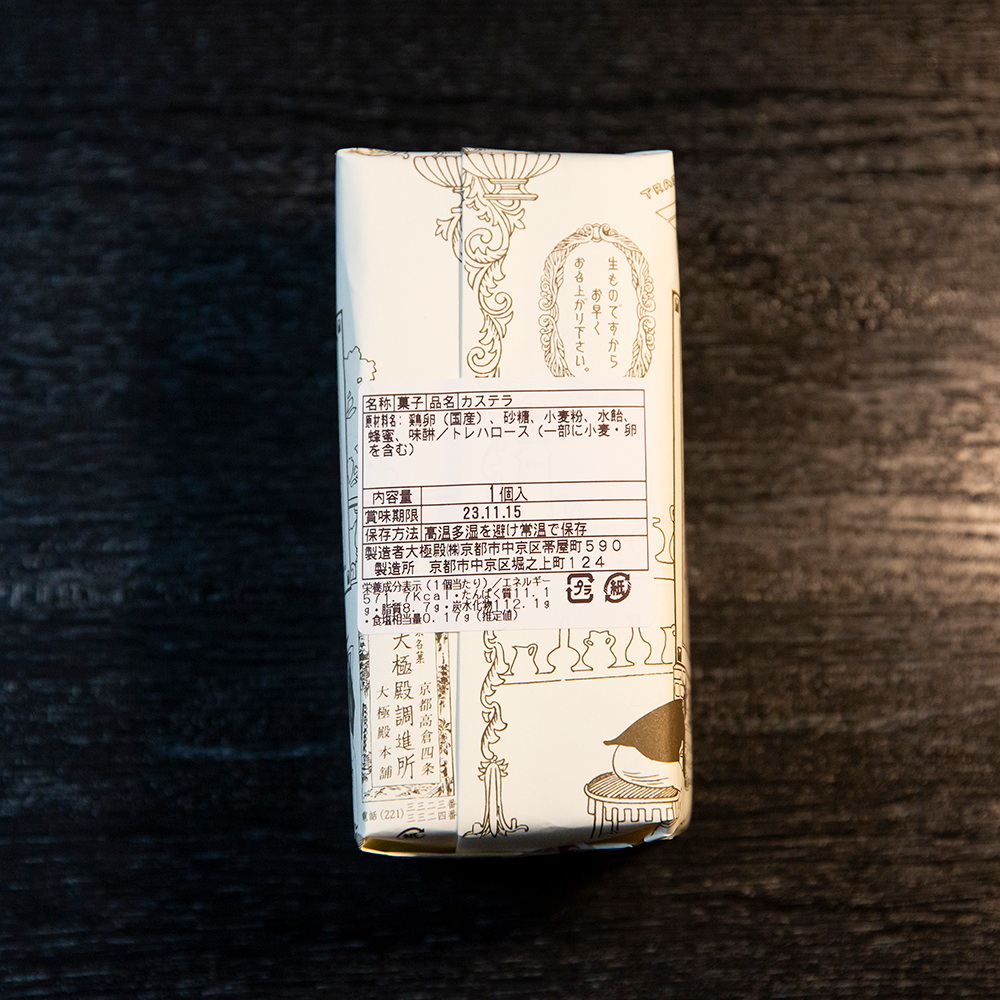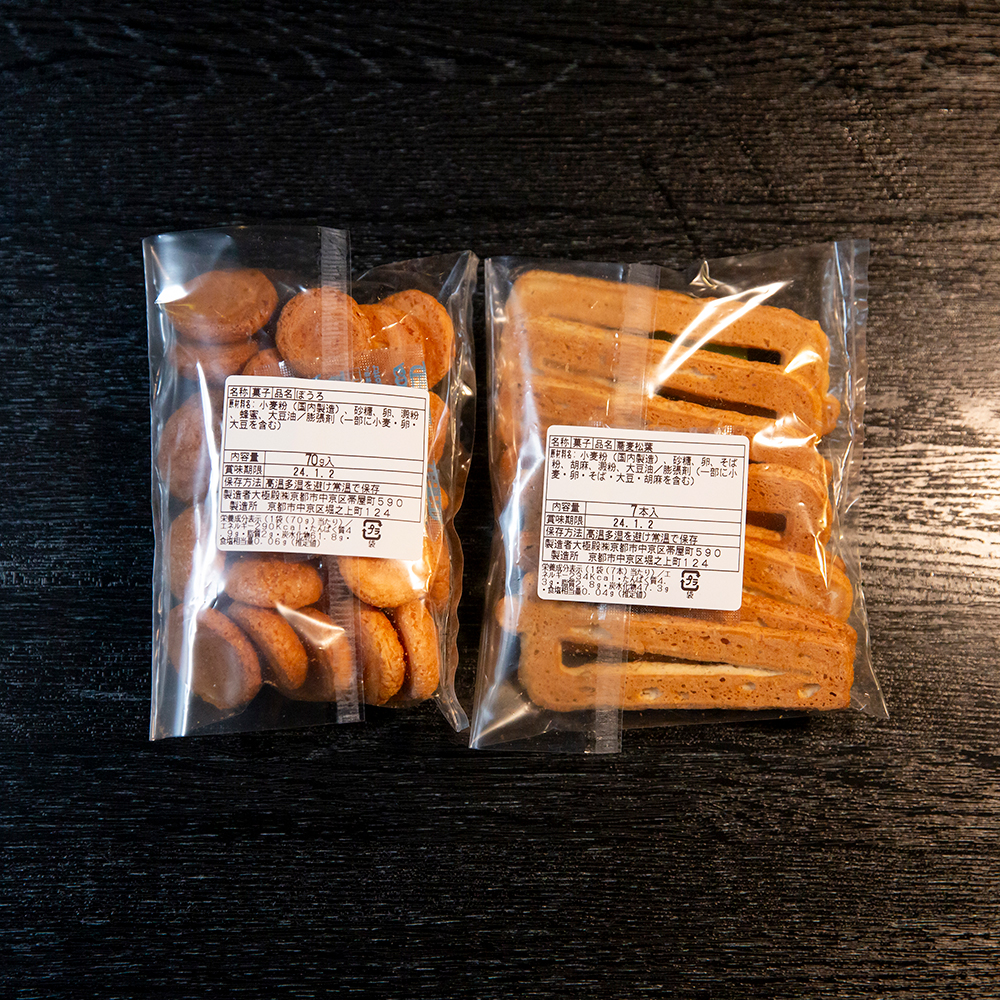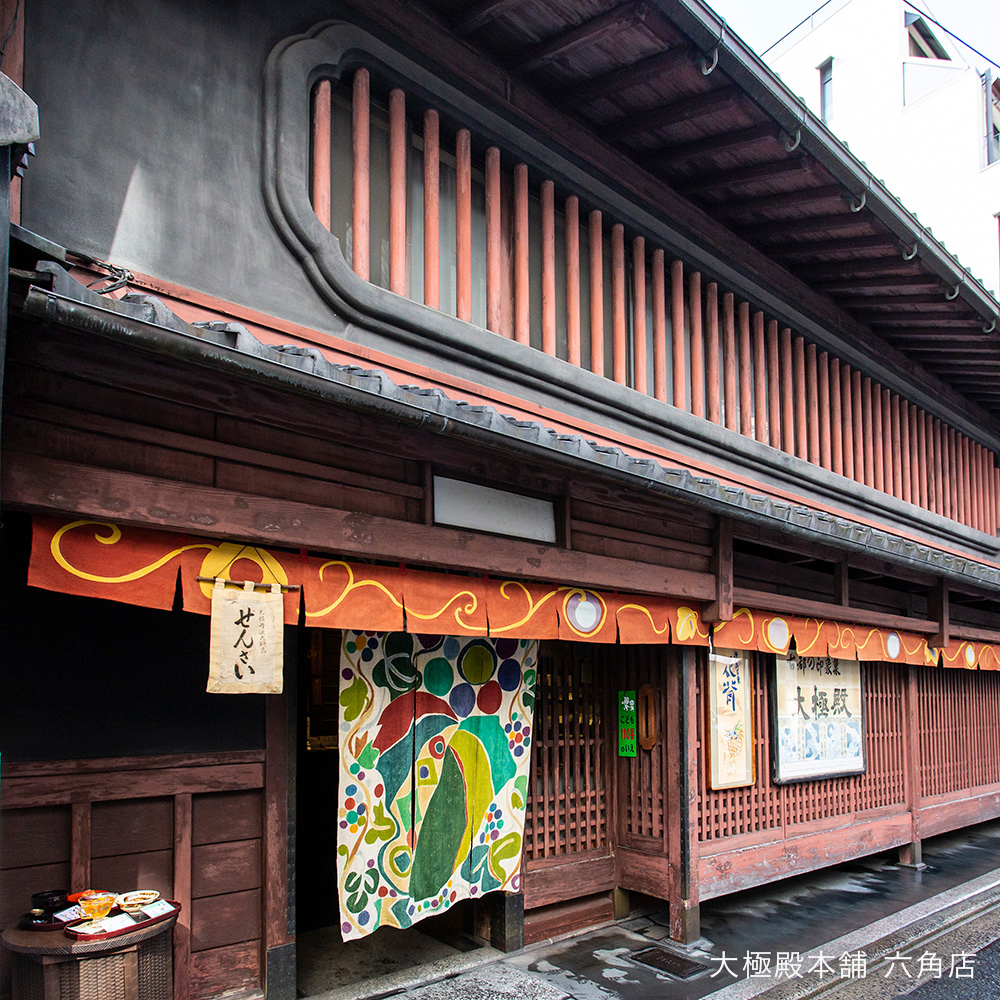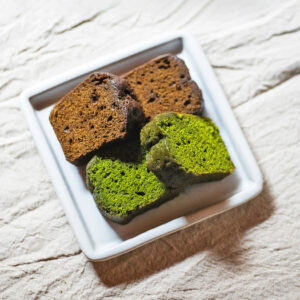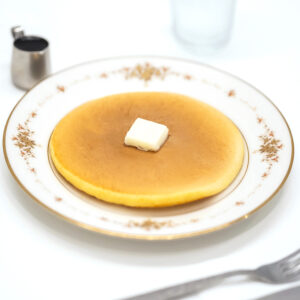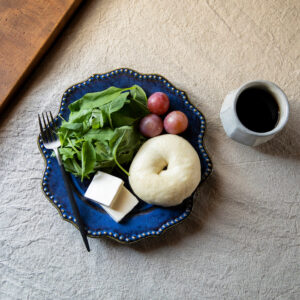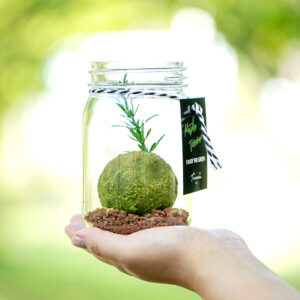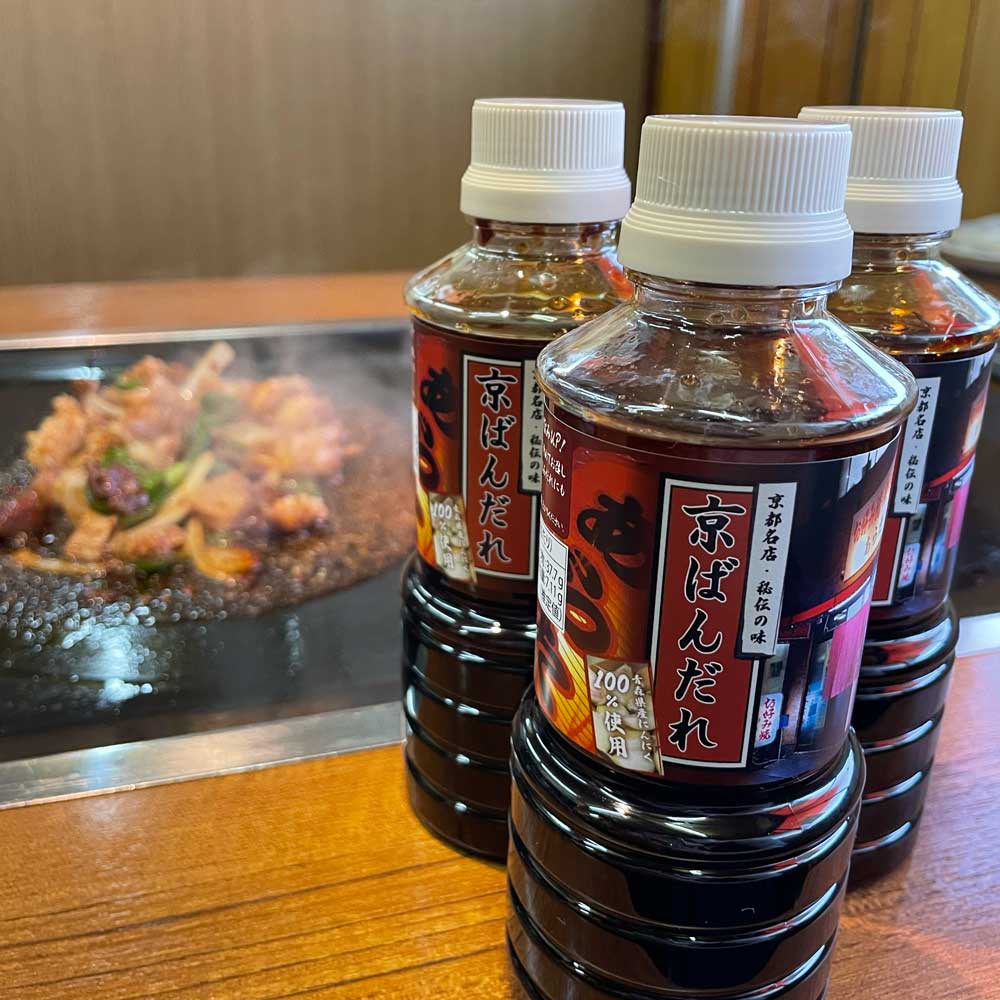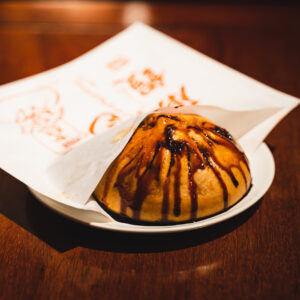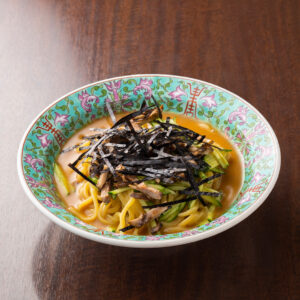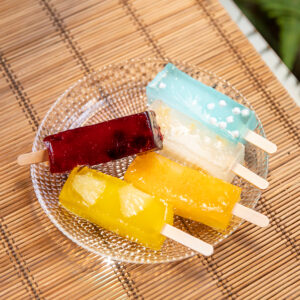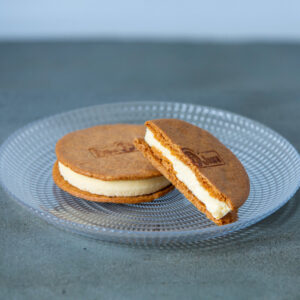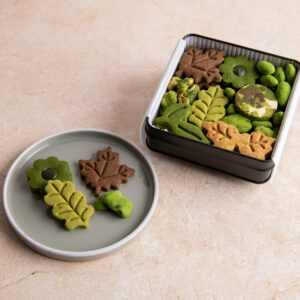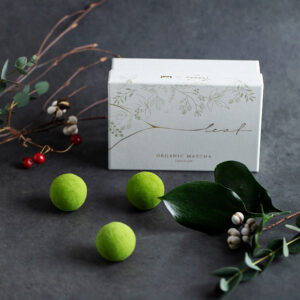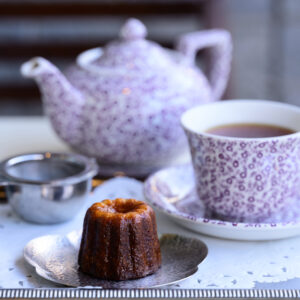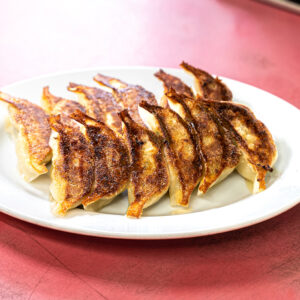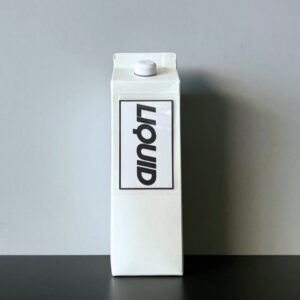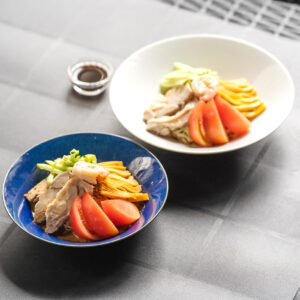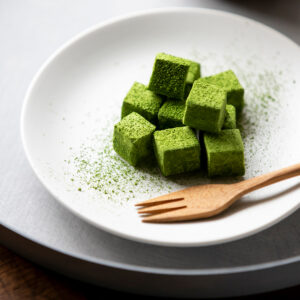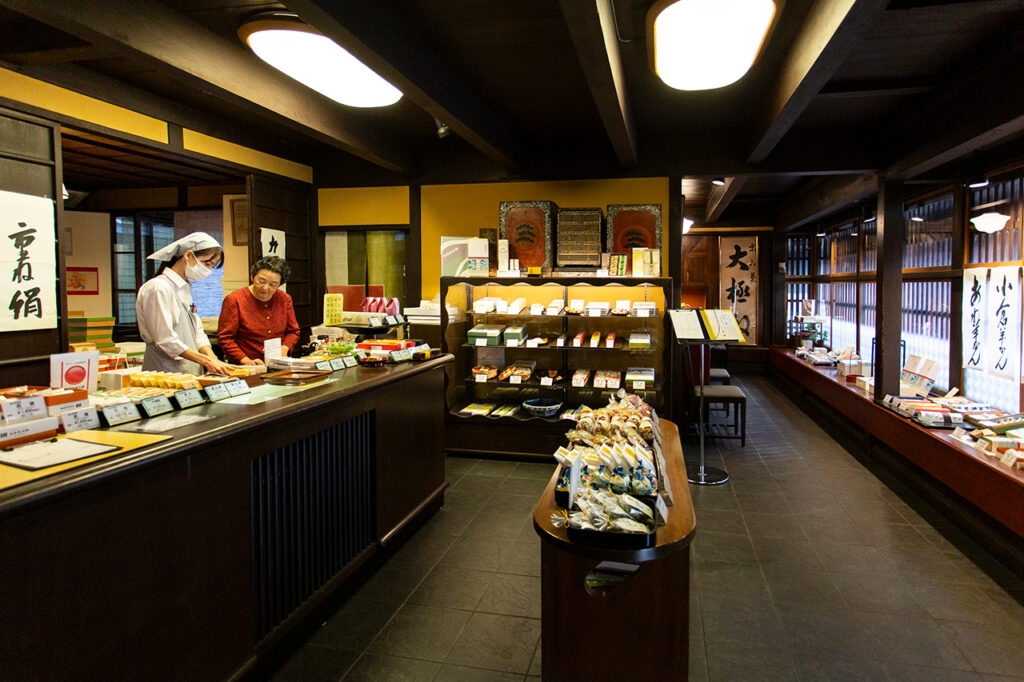
Since its establishment in 1885, "Daigokuden Honpo" has continued to make essential wagashi in Kyoto, such as "Daigokuden," a confectionery presented to Heian Shrine, and "Hanaboshi," which represents a basket of flowers. The wagashi store, located in an atmospheric house that has stood the test of time, is known as one of the first stores in Kyoto to begin making sponge cakes. The Castella made by this pioneer without using any additives such as expansion agents are named "Shunjira (Castella)," and are still loved by many people today.
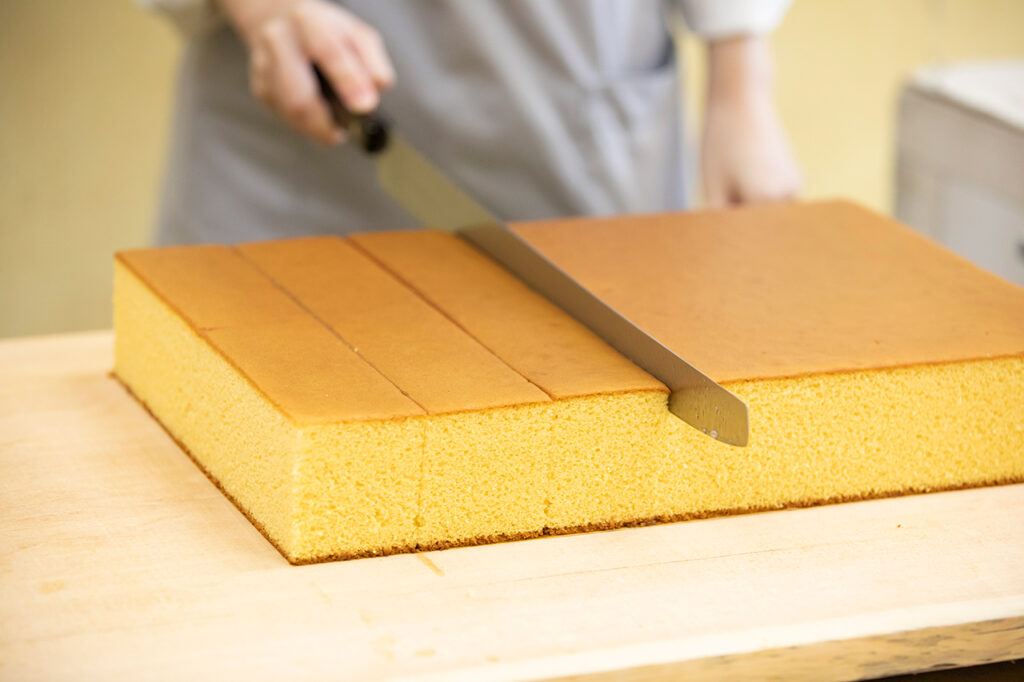
Haruniwa Ryo follows an old-fashioned method that the second generation learned in Nagasaki, where he was trained during the Meiji period (1868-1912). The dough is mixed by mixing whole eggs and then adding only the egg yolks. The large, hot and fluffy Haruniagara are baked in a wooden mold, carefully monitoring the temperature and humidity, and then carefully cut into small pieces with excellent handwork. It can be enjoyed not only as is, but also in various arrangements, such as roasting it in a toaster or freezing it in milk to make an iced cake, making it a convenient and versatile snack to have in the house. Haruniwa-ryo from Daigokuden Honpo is loved by men and women of all ages, and goes well with coffee and tea. Enjoy the good old taste of these sweets, wrapped in the high-carat wrapping paper that was actually used in the Taisho era.









